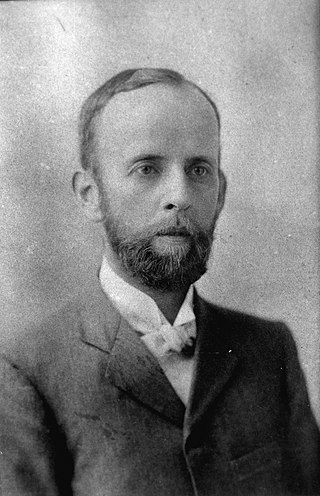
Alfred Jefferis Turner was a pediatrician and amateur entomologist. He was the son of missionary Frederick Storrs-Turner. He introduced the use of diphtheria antitoxin to Australia in 1895. He resided in Dauphin Terrace, Highgate Hill, Brisbane, and was known by the nickname "Gentle Annie".
Naarda calliceros is a species of moth in the family Noctuidae first described by Alfred Jefferis Turner in 1932.
Diplothecta is a monotypic moth genus of the family Noctuidae. Its only species, Diplothecta loxomita, occurs in Queensland, Australia. Both the genus and species were first described by Alfred Jefferis Turner, the genus in 1920 and the species 12 years earlier in 1908.
Habrophyes is a monotypic moth genus of the family Noctuidae. Its only species, Habrophyes xuthosoma, is found in Australia where it is found in the Northern Territory and Queensland. Both the genus and species were first described by Alfred Jefferis Turner, the genus in 1920 and the species 11 years earlier in 1909.

Iropoca is a monotypic moth genus in the subfamily Lymantriinae erected by Alfred Jefferis Turner in 1904. Its only species, Iropoca rotundata, the iropoca moth, was first described by Francis Walker in 1855. It is found in the Australian states of Victoria, New South Wales and Queensland.
Glyphipterix argyrelata is a species of sedge moths in the genus Glyphipterix. It was described by Alfred Jefferis Turner in 1932. It is found in Australia, including Queensland.
Glyphipterix pyrophora is a species of sedge moth in the genus Glyphipterix. It was described by Alfred Jefferis Turner in 1913. It is found in Australia, including New South Wales.
Macrobathra euspila is a moth in the family Cosmopterigidae. It was described by Alfred Jefferis Turner in 1932. It is found in Australia, where it has been recorded from New South Wales.
Macrobathra leucozancla is a moth in the family Cosmopterigidae. It was described by Alfred Jefferis Turner in 1932. It is found in Australia, where it has been recorded from Queensland.
Macrobathra lychnophora is a moth in the family Cosmopterigidae. It was described by Alfred Jefferis Turner in 1932. It is found in Australia, where it has been recorded from Queensland.
Macrobathra nimbifera is a moth in the family Cosmopterigidae. It was described by Alfred Jefferis Turner in 1932. It is found in Australia, where it has been recorded from Queensland.
Macrobathra phryganina is a moth in the family Cosmopterigidae. It was described by Turner in 1932. This species is found in Australia, specifically recorded from Queensland.
Macrobathra platyzona is a moth in the family Cosmopterigidae. It was described by Alfred Jefferis Turner in 1932. It is found in Australia, where it has been recorded from Queensland.
Macrobathra polypasta is a moth in the family Cosmopterigidae. It was described by Alfred Jefferis Turner in 1932. It is found in Australia, where it has been recorded from Queensland.
Macrobathra psathyrodes is a moth in the family Cosmopterigidae. It was described by Alfred Jefferis Turner in 1932. It is found in Australia, where it has been recorded from Queensland.
Macrobathra stenosema is a moth in the family Cosmopterigidae. It was described by Alfred Jefferis Turner in 1932. It is found in northern Australia.
Catephia compsotrephes is a species of moth of the family Erebidae first described by Alfred Jefferis Turner in 1932. It is found in north-western Australia.
Heosphora leuconeura is a moth in the family Pyralidae. The species was first described by Alfred Jefferis Turner in 1913, as Poujadia leuconeura from a specimen collected in Darwin in the month of March. The species epithet, leuconeura, describes the moth as being "white-nerved". It is found in Australia.
Antipterna homopasta is a species of moth in the family Oecophoridae, first described by Alfred Jefferis Turner in 1932 as Periallactis homopasta. The species epithet, homopasta, derives from the Greek, όμοπαστος. The male holotype for Periallactis homopasta was collected at Crows Nest in Queensland.
Antipterna panarga is a species of moth in the family Oecophoridae, first described by Alfred Jefferis Turner in 1932 as Periallactis panarga. The species epithet, panarga, derives from the Greek, παναργος. The male holotype for Periallactis panarga was collected at Crows Nest in Queensland.

